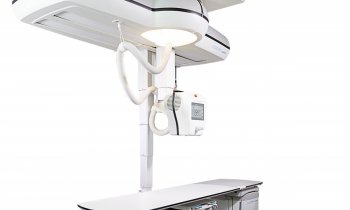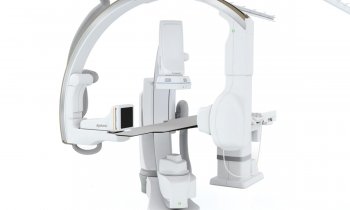Toshiba ASQ delivers hard data on liver fibrosis
A new clinical capability breaks the ‘evidence barrier’ for ultrasound abdominal examinations, John Brosky reports
Ultrasound presents a promising technology for non-invasive examinations of the abdomen. There is a vast, unmet medical need in the area of liver fibrosis for the clinical assessment of patients with fibrosis who either refuse or cannot undergo the painful and invasive biopsy procedures that provide hard histological evidence of the state of the disease.

The lower cost and ready availability of ultrasound makes it attractive. Gastroenterologists are increasingly familiar with the technology and advances in elastography have shown an ability to give an approximate, or qualitative, assessment of fibre stiffness in the liver. Yet, this examination remains more art than science and does not produce clinical evidence critical to assessing the disease progression.
In October 2009, Toshiba Medical Systems Europe broke through the evidence barrier introducing Acoustic Structure Quantification (ASQ) on its high end ultrasound platform Aplio XG.
In the same month, the American Journal of Radiology published a paper authored by Hidenori Toyoda at the Department of Gastroenterology, Ogaki Hospital, Japan, and the oft-cited pioneer in ultrasound signal processing, Takashi Kumada, a clinical investigator with Toshiba, reported findings on fibrosis staging for 148 patients that shows a strong correlation between histological results and the classifications assigned by the ASQ analysis.
Toshiba received the CE mark clearing ASQ for use in Europe and is currently awaiting a 510(k) approval from the Food & Drug Administration (FDA) in the United States.
At the recent French Radiology Congress, Toshiba demonstrated this new capability in an exclusive interview with European Hospital.
The designer of ASQ, Naohisa Kamiyama, explained: ‘Most ultrasound units cannot accept the pure acoustical radio frequency (RF) data. Instead only selected segments of this signal are extracted for display on the typical B-mode image you see on the screen.’
ASQ begins with a signal processor that receives the raw RF signal and extracts data that may indicate extremely small structures, or fibre strands. ‘The liver is a smooth, rather silky organ, which should not have any structures in a healthy state,’ he explained.
ASQ searches the raw signal to separate subtle changes, potentially echoes of very fine structures, from the background noise created by the radio. The next step is to present this refined data into a useful form for the radiologist.
ASQ offers two presentation modes, the first being a statistical graph mapping the distribution curve of the parameter Toshiba discovered responds to the probability of fibre structures reflecting the ultrasound beam or else the ‘homogeneity’ or ‘smoothness’ of tissue. The second display is a familiar looking Doppler-like image with colours associated to the different values superimposed over the B-mode.
Toyoda and Kumada reported a correlation between the data analysis by ASQ and the histological results of the liver tissue where the median values displayed by ASQ agreed with the histological results from biopsies for the same patient with proven chronic hepatitis without cirrhosis.
The ASQ range values accurately indicated the increasing severity of chronic hepatitis for patients within the international classification standards of F1 to F4. The plotting of the findings by the non-invasive ASQ examination closely followed the plotting of the histological exam and the classification by ASQ of patients F2 to severe F4 was validated.
ASQ requires the addition of a powerful processor to the Aplio XG that operates in the background analysing the raw data in real-time, with software developed by Kamiyama, while other Aplio XG functions continue running normally.
‘Together with other advanced applications we recently introduced, such as Precision Imaging and Quantitative Elastography, ASQ enables us to a provide valuable set of diagnostic tools for the clinician to perform comprehensive ultrasound diagnostics in specific regions of the body,’ explained Joop van de Kant, Clinical Market Manager of the Ultrasound Group of Toshiba Medical Systems Europe
Toshiba is currently developing ASQ algorithms for metabolic quantification of fatty liver diseases, added ultrasound architect Kamiyama.
Details: www.toshiba-medical.de
Toshiba is presentin the Aplio XG at Medica, Hall 9, Stand D05
17.11.2009
- display (438)
- economy (1045)
- elastography (89)
- imaging (1628)
- markets (545)
- medical technology (1539)
- non-invasive (82)
- ultrasound (761)











